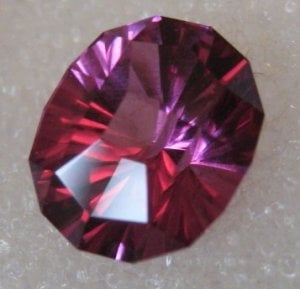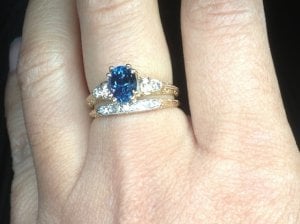lominoblue
Rough_Rock
- Joined
- Dec 17, 2012
- Messages
- 34
Chrono|1358271779|3356121 said:I do not know the type of cut nor the name of the lapidary. I viewed these two about 2 years ago and kept one, sent one home. My intent was to purchase the blue oval and the rectangular was an extra the vendor sent along for my viewing pleasure. We are good friends and he trusts me with his stones. He has since retired from the business. Unfortunately, since I no longer have the rectangular spinel in my possession, I cannot take more pictures of it.
I am concerned that not only is your definition different but you are not reading the pictures accurately. You are sometimes mistaking body colour as the dark part and sometimes mistaking the brilliant part as the body colour. A bow tie isn't necessarily symmetrical nor placed squarely in the center. Not only that, when the lighting condition is just right, the bow-tie lights up and becomes very brilliant.
Ok.. I don't know much about bowties so let's keep it out of this thread. Not to confuse everyone.
As for me having a different "eye" for half/half is very true. So with regard to body color.... it can look ligher or darker depending on how the light hits it right? Or does it stay constant in all orientations such that there is one side with darker body color and the other side with ligher body color? Again, I guess the definition for you guys is that half/half is half black and half light. It seems to me that this definition is confusing because dark body color and black are in the same spectrum... and subjective.














300x240.png)